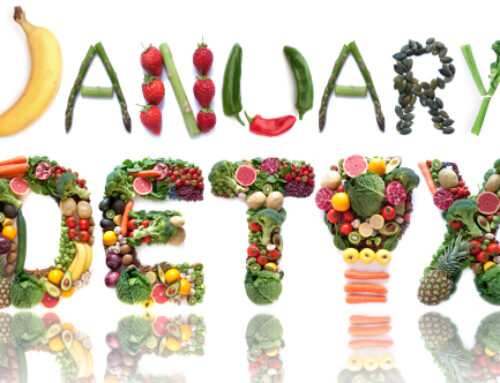Maxims typically date back many years, but “feed a cold, starve a fever” just may beat them all. This saying has been traced to a 1574 dictionary by John Withals, which stated that “fasting is a great remedy of fever.” The belief is that eating food may help the body generate warmth during a “cold” and that avoiding food may help it cool down when overheated. People thought that eating would activate digestive processes which could lead to more fever. Eating less, on the other hand, was believed to stop stoking the heat of a fever. Also, at the time, colds were blamed on a drop in body temperature, which could be helped by eating and drinking.
 Recently science suggests we should change the adage to “feed a cold, feed a fever.” Let’s take a look at colds first. When your body fights an illness, it needs energy, so eating healthy food is helpful. Eating can also help the body generate heat—although wearing an extra layer of clothes or slipping into bed can help keep you warm, too. Drinking warm liquids such as chicken soup broth or tea can also help to keep the body warm when you have a cold.
Recently science suggests we should change the adage to “feed a cold, feed a fever.” Let’s take a look at colds first. When your body fights an illness, it needs energy, so eating healthy food is helpful. Eating can also help the body generate heat—although wearing an extra layer of clothes or slipping into bed can help keep you warm, too. Drinking warm liquids such as chicken soup broth or tea can also help to keep the body warm when you have a cold.
The reasons to eat while experiencing a fever are more interesting. Fever is part of the immune system’s attempt to beat the “bugs.” It raises body temperature, which increases metabolism and results in more calories burned; for each degree of temperature rise, the energy demand increases further. So taking in calories becomes important to keep the fever high enough to slow the infection.
Keeping the body hydrated is even more crucial. Fever dehydrates your system, in part due to the increased sweating from experiencing an elevated body temperature. Replacing fluids is therefore critical to helping the body battle the infection. Dehydration also makes mucus in the nose, throat, and lungs dry up, which can lead to clogged sinuses and respiratory tubes. When mucus hardens it becomes more difficult to cough, which is our bodies way of trying to expel mucus and the germs it contains. Staying hydrated helps keep the mucus running, which, even though it may be disgusting, is one of our important natural defenses.
The challenge, of course, is that when you’re sick you may not feel much like drinking and even less like eating. Loss of appetite is common, and might be part of the body’s attempt to focus its energy on pounding the pathogens. I suggest that you don’t force yourself to eat if you don’t feel like it, but do drink warm broths, tea, and water. Avoid caffeine and alcohol. Caffeine and alcohol enhance dehydration, and alcohol is also a depressant, which holds the body down.
What about eating chicken soup? Chicken soup does possess a couple of magic ingredients. The vitamins and minerals found in the chicken broth all possess immune-boosting properties. (Check out this good chicken bone broth recipe we posted on our Facebook page back in November. And check out this article to learn even more about the benefits of bone broth.) Garlic, onion, ginger, and turmeric should all be included in your recipes when you are sick for more natural immune boosting power.
Try this homemade juicing recipe for a quick immune boost:
Cold & Flu Juice Remedy:
1 Rib of Celery
1/2 Fennel Bulb
1 thumb print size of ginger root
1 thumb print size of turmeric root
1/2 cp purple or green cabbage
1 handful of parsley
1/2 green apple
Place these ingredients in a vitamix or juicing machine and blend on high, adding water or ice for desired consistency.
Supplements can be a great assistant on the road to recovery:
Olive Leaf Extract: This is a powerful health tool used to destroy bacteria and boost immunity.
Olive Leaf Extract has been shown to effectively work against more than 50 disease-causing organisms, including Candida albicans and E. coli. Unlike regular antibiotics that cause antibiotic resistance, Olive Leaf Extract is safe and effective for long-term use and multiple acute episodes.
NAC: Because NAC boosts the body’s levels of GSH (Glutathione, an antioxidant), it helps fight most viruses, including the influenza virus. GSH is vital for optimal T and B-lymphocyte function. NAC is mucolytic, which means that it breaks up heavy and sticky mucus that can build up in conditions such as sinusitis, asthma, bronchitis, pneumonia, and cystic fibrosis. NAC is therefore indispensable in any condition that involves excessive mucous.
What Not To Eat/Drink
Research studies have shown that when mice are fed a diet that is glucose rich during illness, the viability of the mice drops drastically. In one study all of the mice died after only 10 days of a glucose-heavy diet. This phenomenon did not occur when the mice were fed protein or fat-heavy diets. This study concluded that you should be careful with your carbohydrate intake when fighting a viral or bacterial infection. Intake of high-carb foods (pasta, potatoes, rice, etc.), sugar, or sugary soda and juice drinks should be avoided. Contrary to popular belief, even the commonly prescribed Gatorade and Pedialyte should not be taken in when you are ill. Drink water, green tea, warm water with lemon, or herbal teas to speed your recovery. If you need electrolytes, use a bone broth. Bone broth includes plenty of electrolytes with absolutely no immune-system-paralyzing sugar.
The Bottom Line:
Fevers can be caused by both bacteria and viruses — so the adage “Feed a cold, starve a fever” is an oversimplification. Starving a fever by eating fewer calories may actually make it more difficult for your body to fight off an infection. The truth is that eating less during the early stages of an infection can actually be dangerous for your recovery. The body requires large amounts of energy to create and assemble the large number of immune cells necessary to fight the enemy. Avoid all sugar intake, drink plenty of fluids, and take in foods that are easily absorbed and assimilated.
Better Than A Flu Shot Soup
- Two onions, sliced and caramelized
- Four globes of garlic, roasted (The “globe” is the entire head of garlic with all of its “cloves” or pieces.)
- 1/2 gallon of soup broth (bone or vegetable-based)
- One bay leaf and one sprig of rosemary
- Thinly sliced raw garlic to taste
- Salt to taste
Directions
- Remove the garlic cloves from their peels.
- Begin to heat your broth.
- Slice onions, and add them to a heated skillet that has been warmed with a bit of cooking oil. (Coconut works well.)
- Cook onions on medium-high heat until they become translucent and begin to caramelize.
- When they are browning slightly, remove them from heat.
- Add the peeled roasted garlic, caramelized onions, and broth to a food processor. Puree until smooth. Depending on the size of your soup batch and your food processor, you may need to do this in several batches. Take care not to burn yourself with your hot ingredients.
- Place pureed ingredients back to a sauce pan and add the rosemary and bay leaf. Stir them in, cover, and let the mixture sit for about 10 minutes. Remove the herbs. Your soup is ready.
Stop in our Roanoke, Virginia chiropractic office any time to discuss even more tips for cold and flu season and to pick up supplements. We hope to see you soon!

Daryl C. Rich, D.C., C.S.C.S., A.R.T.






